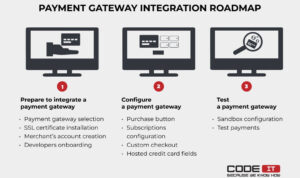Starting with Understanding the Android Operating System, this exploration reveals the fascinating history and evolution of one of the most widely used mobile platforms today. With its roots in Linux, Android has grown into a dynamic system that is both versatile and user-friendly, making it a popular choice for developers and consumers alike. From its architectural components to the rich ecosystem of applications available through the Google Play Store, we’ll delve into what makes Android unique and essential in the tech landscape.
Additionally, we’ll cover crucial aspects such as the development environment, key features, security considerations, and the continuous updates that shape the user experience. By the end of this discussion, you’ll have a comprehensive understanding of not just how Android functions, but why it continues to lead in the mobile operating system arena.
Overview of the Android Operating System
The Android Operating System (OS) represents one of the most significant advancements in mobile technology since its inception. Understanding its journey from a niche platform to a dominant force in the mobile landscape provides insight into its architecture and the integral components that contribute to its success.The history of Android dates back to 2003 when it was founded by Andy Rubin, Rich Miner, Nick Sears, and Chris White.
Initially, Android Inc. aimed to create an advanced operating system for digital cameras, but the vision quickly shifted towards mobile devices. In 2005, Google acquired Android Inc., and in 2008, the first commercial version of Android was released. Over the years, Android evolved through various versions, each named after a dessert until version 10, when Google shifted to numerical naming for simplicity.
With the release of Android 12, the OS introduced Material You, enhancing personalization and user experience.
Android Architecture and Components
The Android architecture is a layered structure that defines how the OS operates and interacts with application software. This architecture comprises several key components, each serving a distinct purpose within the ecosystem. The primary layers include:
- Linux Kernel: The foundation of Android, providing core system services such as security, memory management, and process management.
- Hardware Abstraction Layer (HAL): Acts as a bridge between the hardware and the software stack, allowing Android to communicate with the device’s hardware components.
- Android Runtime (ART): The managed runtime environment that executes applications, featuring ahead-of-time (AOT) compilation for improved performance and memory efficiency.
- Framework Layer: Provides a set of APIs that developers use to build applications, offering components like Activity Manager, Window Manager, and Content Providers.
- Applications: The top layer consists of user-facing applications that interact with the framework to deliver functionality.
Each of these components plays a crucial role in ensuring smooth operations and facilitating a rich user experience.
Role of the Linux Kernel in the Android Ecosystem
The Linux kernel is pivotal in the Android ecosystem, serving as the core of the operating system. It is responsible for essential system functions, including device drivers, memory management, and process scheduling. The importance of the Linux kernel can be highlighted through several key functions:
- Security: The kernel provides a secure environment through user and group permissions, ensuring that applications operate within a controlled space.
- Performance Optimization: With the kernel managing CPU resources and memory allocation, it enables efficient multitasking and responsiveness of applications.
- Hardware Interaction: The kernel facilitates direct communication with the hardware, ensuring that applications can utilize device capabilities such as cameras, GPS, and sensors.
In summary, the Linux kernel not only serves as the backbone of the Android OS but also enhances its functionality and stability, enabling a broad range of applications and services that users have come to rely on in their daily lives.
Key Features of Android
The Android operating system stands out in the competitive world of mobile platforms due to its rich feature set and flexibility. Understanding these key features is essential for both users and developers alike, as they highlight what makes Android a popular choice globally.One of the most distinguishing aspects of Android is its open-source nature, allowing users and manufacturers alike to customize the OS to fit their needs.
This level of customization extends beyond the operating system itself, impacting the user experience significantly. Users can install custom ROMs, which are modified versions of Android, or simply adjust the settings and home screens to suit personal preferences.
Customization and User Interface Flexibility
The customization options available on Android are a primary reason for its widespread adoption and user satisfaction. Users enjoy the ability to personalize their devices extensively, leading to a unique experience for each individual device. The flexibility of the user interface allows modifications that cater to different aesthetic tastes and usability needs.Key points regarding customization include:
- Launchers: Users can replace the default launcher with third-party options, allowing different layouts, icon styles, and features.
- Widgets: Android supports interactive widgets on the home screen, providing real-time updates and shortcuts to applications.
- Theming: Many devices allow users to apply themes for a cohesive visual style across the system, including changes to icons, fonts, and colors.
These features empower users to tailor their devices to better fit their lifestyles, promoting enhanced functionality and aesthetics.
Google Play Store and App Ecosystem
The significance of the Google Play Store cannot be overstated in relation to the Android ecosystem. As the primary app distribution platform for Android, it offers a vast array of applications that enhance the functionality of devices. The Google Play Store includes:
- Extensive App Selection: With millions of apps available, users can find everything from productivity tools to entertainment options, ensuring there’s something for everyone.
- Regular Updates: Developers frequently update their apps, providing users with new features and improved security.
- User Reviews and Ratings: The ability to review and rate apps helps users make informed decisions about which applications best suit their needs.
The app ecosystem not only enriches the user experience but also promotes a vibrant developer community. This community continuously innovates, leading to the availability of cutting-edge applications that keep Android devices at the forefront of technology.
Development Environment for Android

Setting up a proper development environment is crucial for creating successful Android applications. This section will Artikel the necessary tools and software required for Android app development, alongside a step-by-step guide to establishing an effective development setup. Through this process, developers can harness the full potential of the Android platform, streamlining their workflow and enhancing productivity.
Required Tools and Software for Android App Development
To dive into Android app development, a few essential tools and software must be installed. Each of these components plays a vital role in the development process:
- Java Development Kit (JDK): The JDK is necessary for compiling Java code, which is the primary language used in Android development.
- Android Studio: This is the official Integrated Development Environment (IDE) for Android development, providing developers with comprehensive tools to build applications.
- Android SDK (Software Development Kit): The SDK includes a set of development and debugging tools, as well as libraries and APIs needed to develop Android applications.
- Android Emulator: This tool allows developers to run and test applications in a virtual device environment, simulating a range of Android devices.
- Gradle: Gradle is a build automation tool integrated with Android Studio that manages dependencies and builds processes.
Step-by-Step Guide to Setting Up an Android Development Environment
Establishing a suitable Android development environment involves several steps. Each step will guide you through the necessary installations and configurations:
- Download and Install JDK: Visit the official Oracle website, download the latest version of JDK, and follow the installation prompts. Ensure that your environment variables are set correctly.
- Install Android Studio: Go to the Android Studio website and download the installer for your operating system. Follow the setup wizard, allowing it to install the Android SDK and necessary components.
- Configure Android SDK: Open Android Studio, navigate to the “SDK Manager,” and select the SDK platforms you wish to install. This will ensure you have access to the latest Android APIs.
- Set Up the Android Emulator: In Android Studio, access the “AVD Manager” to create a new virtual device. Choose the device specifications based on your testing needs.
- Create a New Project: Launch Android Studio and click on “Start a new Android Studio project.” Follow the prompts to set up your app’s basic configuration.
Android Studio and Its Functionalities
Android Studio is the cornerstone of Android app development, equipped with a plethora of features designed to enhance the developer experience. Understanding its functionalities is essential for effective app development.The IDE provides an intuitive user interface, code editor, and performance tools that streamline the development process. Key functionalities include:
- Code Editor: The advanced code editor supports features like code completion, real-time error checking, and syntax highlighting, making coding more efficient.
- Layout Editor: This drag-and-drop interface allows developers to design user interfaces easily, visually laying out elements and adjusting properties.
- Integrated Version Control: Android Studio seamlessly integrates with version control systems like Git, allowing for smooth collaboration and code management.
- Debugging Tools: Comprehensive debugging tools enable developers to track down and fix issues within their applications effectively.
- Performance Monitoring: Capabilities such as the Android Profiler provide insights into your app’s performance, helping identify areas for improvement.
The combination of these tools and features empowers developers to create robust and innovative applications for the Android ecosystem.
Android App Architecture
The architecture of Android apps is a structured framework that defines how various components interact with each other. Understanding this architecture is crucial for developers as it lays the foundation for creating efficient and high-performance applications. The main components of Android app architecture include Activities, Services, and Broadcast Receivers, each serving a unique purpose in the overall functionality of an application.
Components of Android App Architecture
The Android app architecture consists of several key components that work together seamlessly. Each component has its specific role, which contributes to the overall function of the app. Here is a brief overview of these components:
- Activities: Activities represent a single screen with a user interface. They allow users to interact with the app by displaying content and handling user input. Each activity is an instance of the Activity class and is responsible for managing the UI and user interactions.
- Services: Services are components that run in the background to perform long-running operations without a user interface. They are ideal for tasks such as playing music, handling network transactions, or processing data even when the app is not in the foreground.
- Broadcast Receivers: Broadcast Receivers respond to broadcast messages from other applications or the system itself. They allow apps to listen for specific events, such as incoming SMS messages or changes in network connectivity, and act accordingly.
To visualize the relationship between these app components, consider the following table:
| Component | Role | Interaction |
|---|---|---|
| Activities | User Interface | Handles user interaction and navigation |
| Services | Background Operations | Runs tasks without UI; can communicate with Activities |
| Broadcast Receivers | Event Response | Listens for system-wide broadcast messages |
The Android Manifest file is a critical component of an Android application. It acts as the central configuration file that provides essential information to the Android system about the application. This file includes details such as the app’s components (activities, services, receivers), permissions required by the app, and the app’s minimum API level. The Manifest file ensures that the Android system can manage and run the app correctly while enforcing security and permissions.
“The Android Manifest file is vital for defining app components and permissions, ensuring proper app functionality and security.”
Security Features in Android
Android OS is designed with a variety of robust security features to protect users’ data and ensure a safe app environment. With the rising concerns over mobile security, Android has implemented several layers of protection that help safeguard user information from unauthorized access and malicious threats. This comprehensive security framework is crucial for both end-users and developers who are tasked with creating secure applications.
Integrated Security Features of Android
The Android operating system incorporates multiple security features that work together to provide a secure environment. Some of the key security mechanisms include:
- Sandboxing: Each application runs in its own sandbox, preventing unauthorized access to other apps or the system resources.
- Permission Model: Android requires apps to request permissions for sensitive actions, allowing users to control what data and features they share.
- Encryption: Data on the device can be encrypted using strong encryption standards, ensuring that it remains unreadable without proper authentication.
- Google Play Protect: This built-in malware protection continuously scans apps for harmful behavior and alerts users to potential threats.
- Secure Boot: Ensures that only verified software is loaded during the boot process, preventing unauthorized modifications to the system.
The combination of these security features significantly enhances the overall integrity and security of devices running Android.
Common Security Practices for Android App Development
Developers must adhere to best security practices throughout the app development lifecycle to mitigate risks. Implementing these practices is essential for building secure applications that protect user data effectively. Here are some recommended practices:
- Input Validation: Always validate user input to prevent injection attacks and ensure that the input conforms to expected formats.
- Use HTTPS: Ensure all data transmission occurs over HTTPS to protect data in transit from eavesdropping and man-in-the-middle attacks.
- Secure Storage: Store sensitive information using Android’s secure storage mechanisms, such as the Android Keystore system.
- Code Obfuscation: Use code obfuscation tools to make it harder for attackers to reverse-engineer your app and extract sensitive information.
- Regular Updates: Keep libraries and dependencies up to date to protect against known vulnerabilities and exploits.
These practices not only fortify the app’s defenses but also build user trust by demonstrating a commitment to security.
Potential Vulnerabilities and Mitigation Strategies in Android Applications
Despite the robust security features, Android applications may still face various vulnerabilities. Identifying and addressing these vulnerabilities is crucial for maintaining a secure application ecosystem. Common vulnerabilities include:
- Insecure Data Storage: Sensitive data improperly stored can be accessed by unauthorized users. Mitigation involves using encrypted storage solutions and avoiding storing sensitive information in shared preferences.
- Improper Implementation of Permissions: Failure to request the least privilege necessary can lead to security breaches. Using the principle of least privilege when designing permission requests can minimize this risk.
- Insecure Communication: Unencrypted data transfers can be intercepted. Always use HTTPS and implement certificate pinning where appropriate.
- Code Injection: Attackers may exploit input fields to execute malicious code. Input validation, sanitization, and using prepared statements can effectively mitigate this threat.
- Outdated Libraries: Using outdated third-party libraries can introduce vulnerabilities. Regularly review and update libraries to their latest, secure versions.
By proactively addressing these vulnerabilities with appropriate strategies, developers can significantly enhance the security posture of their Android applications.
Android Versions and Updates
Android, as an operating system, has evolved significantly since its inception. Each version has not only introduced new features and enhancements but has also followed a distinct naming convention that reflects its development journey. Understanding these versions and their updates is essential for both users and developers.The Android operating system releases are named after sweet treats, a tradition that started with Android 1.5 Cupcake.
This naming convention continued until Android 9.0 Pie, after which Google shifted to a more straightforward numeric versioning system starting with Android 10. Each version update often includes new functionalities, improvements in user interface, performance enhancements, and crucial security fixes.
Naming Conventions and Notable Changes, Understanding the Android Operating System
The naming convention for Android versions not only adds a fun element but also helps in identifying the updates more easily. Here’s a brief overview of notable Android versions and their significant changes:
- Android 1.5 Cupcake: Introduced widgets and the on-screen keyboard.
- Android 2.2 Froyo: Enhanced performance and introduced push notifications.
- Android 4.0 Ice Cream Sandwich: Unified user interface for phones and tablets.
- Android 5.0 Lollipop: Introduced Material Design for a more vibrant user experience.
- Android 6.0 Marshmallow: Focused on permissions management and Doze mode for battery optimization.
- Android 8.0 Oreo: Added Picture-in-Picture mode and notification dots.
- Android 9.0 Pie: Introduced gesture navigation and adaptive battery features.
- Android 10: Shifted to a numerical versioning, adding dark mode and enhanced privacy controls.
- Android 11: Focused on conversations, privacy, and media controls.
- Android 12: Introduced Material You design for personalized themes.
Importance of Regular Updates
Regular updates to the Android operating system are essential for maintaining device security and performance. With each release, Google addresses vulnerabilities that could be exploited by malicious actors. Moreover, updates enhance system stability and often come with performance optimizations that help prolong the device’s lifecycle.Security patches are frequently released outside of major updates, underscoring their importance. Users are encouraged to install these updates promptly to safeguard their devices against threats.
The importance of these updates is highlighted by the fact that many security breaches occur due to outdated software.
“Keeping your Android device updated is crucial for both security and performance.”
Android Beta Program
The Android Beta program provides an opportunity for developers and early adopters to test upcoming features before the official release. By participating in this program, individuals can provide valuable feedback to Google, helping to improve the final product. This also allows developers to ensure their apps are compatible with the latest version of Android.Users enrolled in the Beta program often gain access to new functionalities and enhancements, giving them a first-hand experience of what’s to come.
This early access can be particularly beneficial for developers who need to adapt their applications to the evolving Android landscape.In conclusion, understanding Android versions and their updates is vital for anyone involved with or using the Android ecosystem. Regular updates are key to maintaining security and performance, while the Beta program allows for proactive engagement with the platform’s development.
Comparison with Other Operating Systems
The Android operating system stands as one of the most popular mobile platforms globally, but it exists in a competitive landscape populated by other operating systems, notably Apple’s iOS. Understanding how Android compares with these systems can illuminate user experience, app availability, and overall market position.
Android vs. iOS: User Experience and App Availability
When comparing Android to iOS, one of the most significant differences lies in user experience and app availability. Android offers a highly customizable interface allowing users to modify home screens, choose default applications, and personalize settings extensively. In contrast, iOS maintains a more uniform interface across devices, which some users find cleaner and easier to navigate.App availability also differs between these two platforms.
Although both Android and iOS have millions of apps available, there are notable distinctions:
- Android users have access to Google Play Store, which features a diverse range of apps, including more experimental applications that may not meet Apple’s stricter standards.
- iOS users often receive apps earlier due to the preference developers have for launching on iOS first, given its lucrative user base.
- Some apps are exclusive to iOS, particularly in productivity and design fields, which can influence user preference.
Advantages and Disadvantages of Using Android
While Android presents numerous benefits, it is essential to recognize both its advantages and disadvantages when compared to other mobile operating systems.Advantages of Android include:
- Open-source nature allows developers to create a wider variety of applications and modify the operating system itself.
- Broad hardware compatibility, as Android operates on devices from various manufacturers, enhancing consumer choice.
- Integration with Google services, providing seamless access to applications like Google Drive, Maps, and Assistant.
Conversely, disadvantages may include:
- Fragmentation challenges, where multiple versions of Android lead to inconsistent user experiences across devices.
- Security vulnerabilities, as the open nature of the platform makes it more susceptible to malware.
- Less optimization for specific hardware, potentially leading to performance issues on lower-end devices.
Market Share Statistics and Trends
As of the latest reports, Android holds a commanding market share, often cited at around 70% of the global mobile operating system market. This dominance can be attributed to its extensive reach and diverse array of devices catering to different price points and consumer preferences. In contrast, iOS enjoys a market share close to 27%, primarily in the premium smartphone segment.
Notably, Android’s growth trend continues, particularly in emerging markets where budget-friendly devices abound. Recent statistics illustrate that:
| Operating System | Market Share (%) | Growth Trend |
|---|---|---|
| Android | 70% | Increasing in emerging markets |
| iOS | 27% | Stable but less growth in budget segment |
This data reflects the competitive landscape of mobile operating systems and underscores Android’s significant presence in the market, characterized by its adaptability and user-centric features.
Future Trends in Android Development: Understanding The Android Operating System
As technology continues to advance, the Android operating system evolves in tandem, embracing new methodologies and tools that enrich the developer experience and enhance user engagement. The future of Android development is set to be shaped significantly by emerging technologies such as Artificial Intelligence (AI), the Internet of Things (IoT), and the rollout of 5G connectivity. These trends not only promise to improve app functionality and performance but also redefine how users interact with their devices.The integration of AI and IoT into Android development is rapidly changing the landscape.
AI capabilities enable applications to learn from user behavior, providing personalized experiences and functionalities. Meanwhile, the IoT is fostering a seamless connection between devices, creating a more cohesive ecosystem. As these technologies become mainstream, Android apps are likely to leverage them to offer innovative solutions that enhance everyday life.
Impact of 5G Technology on Android Devices and Applications
The advent of 5G technology is poised to revolutionize the way Android devices operate and the applications they support. With significantly faster data speeds and lower latency, 5G opens the door to a host of possibilities for both developers and users. This connectivity will enable real-time data transmission and foster the development of applications that rely on instantaneous communication, such as augmented reality (AR) and virtual reality (VR) applications.One of the key advantages of 5G technology is its ability to enhance mobile gaming experiences, allowing for high-definition graphics and uninterrupted gameplay.
Furthermore, industries such as healthcare and automotive will see a significant transformation in how data is communicated, leading to improved services and smarter devices.
Predictions for Future Android Features and Innovations
The following table Artikels predictions for future Android features and innovations, illustrating how technology is expected to evolve within the Android ecosystem:
| Feature/Innovation | Description | Impact |
|---|---|---|
| AI-Driven Personal Assistants | Enhanced virtual assistants that provide more contextual responses based on user preferences. | Improved user interaction and satisfaction. |
| Seamless IoT Integration | Native support for connecting and managing IoT devices directly from Android. | Increased convenience and functionality for smart homes. |
| Advanced Augmented Reality | Integration of AR capabilities into apps for immersive user experiences. | Revolutionizes industries like gaming, retail, and education. |
| Enhanced Security Features | Next-gen security protocols utilizing AI for threat detection and response. | Stronger protection for user data and privacy. |
| Low-Latency Gaming Support | Optimizations for gaming apps to take full advantage of 5G speed and stability. | More engaging gaming experiences with real-time interactions. |
The convergence of these advancements presents numerous opportunities for developers to innovate and create applications that truly resonate with users’ needs. As Android continues to mature, its adaptability to such trends will determine its trajectory and the experiences it offers in the coming years.





